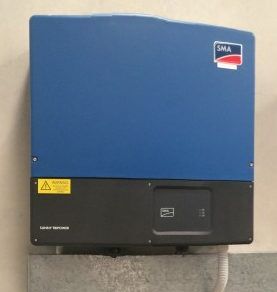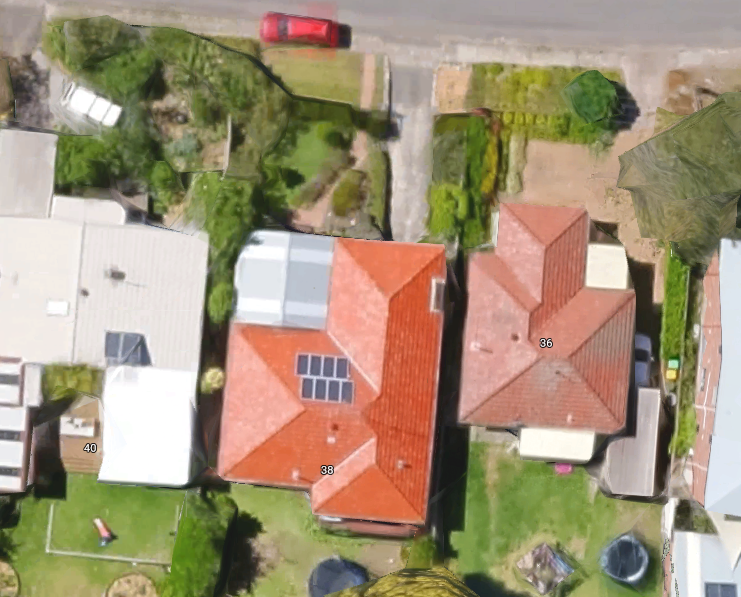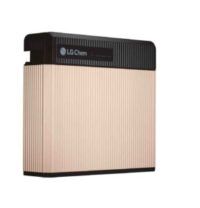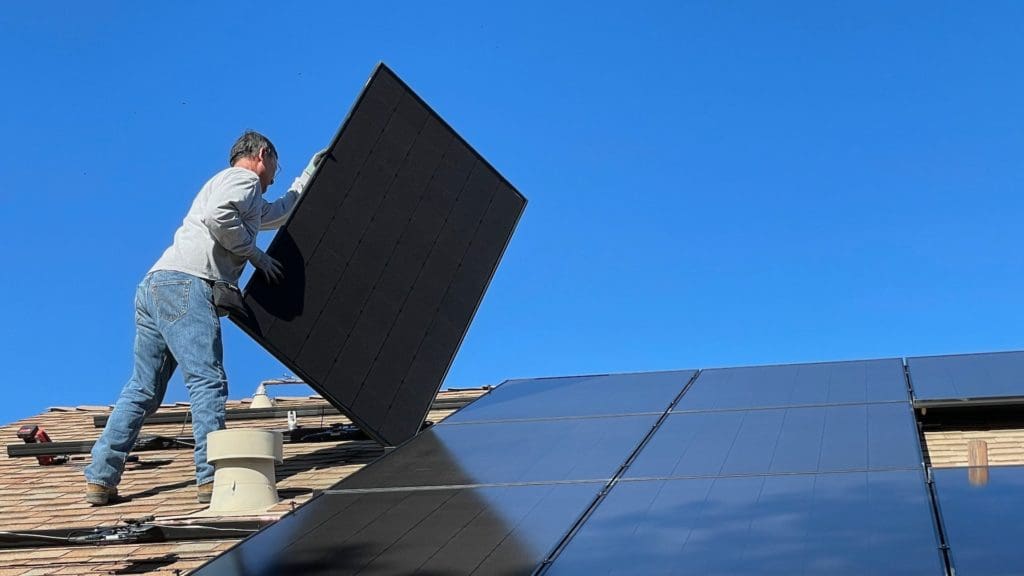Some of the most common questions we receive at Solar Choice are about adding solar panels to an existing solar PV system. This article takes a look at the situations in which you might want to add panels, and what you need to bear in mind before making a decision.
New: Check out our tool for expanding an existing solar system with panels/batteries!
Possible reasons for adding more panels
There are a few different reasons that someone might want to augment their solar system with more panels, and many of them overlap. We’ve detailed a handful of them below.
- You have an ‘oversized’ inverter that was installed with your original system, and you’re ready to ‘fill out’ the remaining capacity.
- You recently lost access to a premium feed-in tariff and want more solar capacity.
- You still have free space on your roof and want to take advantage of it.
- You want to add battery storage and need extra panels to increase your energy independence.
Compare quotes from up to 7 installers in your area now.
What to keep in mind when adding panels
Depending on the reason that you are adding panels, your considerations will differ. We take a look at each one in a bit more detail below.
 1. Existing, oversized inverter
1. Existing, oversized inverter
If you have an extra large inverter that was sold to you on the premise that you can ‘upgrade’ at some point in the future, you may have recently decided that now is the time to do so.
We should first note that inverter oversizing is not a practice that we generally recommend – mainly because adding extra panels can be tricky. Inverters will usually have one or two maximum power point tracker (MPPT) inputs. MPPTs help your inverter to squeeze the greatest possible energy production out of your solar panel strings.
If your inverter has only one MPPT input, you’ll want to add panels with the same exact voltage & amperage specifications because even a small mismatch can have a significant impact on your system’s energy yields. We recommend getting input from several accredited solar installers before making a decision about how to proceed.
If your inverter has multiple MPPT inputs, hopefully the installer who promised the ‘upgrade-ability’ of your system left one of them unused. The reason is that adding a fresh, new string of panels to your inverter is the easiest (and neatest) way to expand your system out to your inverter’s full capacity, and this is only possible if you have an unused MPPT input.
How do you know if your inverter has an empty MPPT socket? Either the original installer let you know, or you can get in touch with an installer to have them check it. Or you can try your luck having a go at working it out for yourself.
Also keep in mind that if you’re unable to find panels that are exactly the same as or very similar to your existing panels, the aesthetics of your roof may not be fantastic, depending on your preferences.
 2. You’ve just lost a premium feed-in tariff
2. You’ve just lost a premium feed-in tariff
Most of the solar systems installed under the generous solar feed-in tariffs of yesteryear were small because solar PV systems were expensive, and premium FiTs were necessary for them to make financial sense. Fortunately, this is no longer the case – PV system prices have come down to a point where going solar makes sense even without a strong feed-in tariff.
But most state-backed feed-in tariff programs stipulated that system owners could not expand their existing solar systems – at the risk of losing their feed-in benefits. Two of these programs – the Solar Bonus Scheme in NSW and the Transitional Feed-in Tariff in South Australia – recently concluded payments, leaving the formerly size-constrained system owners at liberty to add more solar capacity. Other state programs will end in the coming years (a full list here).
In this situation, there are several options:
- Add a brand new solar system alongside the existing one – This may be the easiest & most affordable option, especially if your existing system’s inverter is still under 5 years old.
- Swap out the existing inverter* for a larger one and add more panels – Solar panels have a standard life expectancy of 25 years, while inverters generally need to be replaced by the 10th year of operation. If your inverter is over 5 years old and you have determined that you’ll save more money by adding more solar panels, it might make sense to simply get rid of it early and put in a new, larger one.
- If you have an oversized inverter (as discussed above), add more panels – This option is of course only available to households with surplus inverter capacity.
- Install additional panels with microinverters – When microinverters are used, a central inverter is not required, and as few as 1 extra panel may be added. Alternatively, ‘smart modules’ (which are solar panels with an embedded microinverter) may be installed instead. Microinverters also offer some benefits with regard to shading, but may be more expensive on a per-panel basis than if you installed a conventional system with a central inverter.
3. Extra space on your roof
Let’s say you installed your system in the last couple of years and that you do not have access to a generous, state-sponsored solar feed-in tariff. You’re free to add more panels as you see fit – or as fit into your budget. In this case, your options are the same as those described above in section 2.
 4. Adding solar and batteries
4. Adding solar and batteries
More and more people are adding solar panels to their existing solar system because they also plan on adding batteries. Often, the additional solar panels and the battery bank are installed together at a package price.
When adding batteries, there is a wide variety of approaches, each of which as its own pros and cons. We’ve listed the main options below so that you have an idea about what to expect, but your installer/system designer might suggest something different, or a combination of the below.
- Swap out the existing inverter* with a ‘hybrid’ inverter and add more panels – A hybrid (or ‘multi-mode’) inverter can handle multiple inputs – most commonly solar and batteries. If your inverter is due for replacement, upgrading to a hybrid inverter with a larger capacity may be the easiest and most cost-effective way to add more panels and batteries.
- Replace the existing inverter* with a larger inverter, add panels & add batteries on a separate inverter – You don’t need a hybrid inverter to add batteries. As an alternative, your installer can add a larger standard inverter (along with some more panels), and then bolt on batteries using a dedicated battery inverter (a ‘two box’ solution – although some battery products may come with a built-in inverter). While this option may be effective and viable, it may also be more expensive and less efficient than the hybrid inverter option mentioned above.
- Add a second solar PV system along with batteries – If your existing inverter is still relatively new (e.g. less than 5 years old), it might make sense for you to add a brand new solar system in parallel with your existing one. This second system could include a hybrid inverter which manages both the new solar plus the batteries, but in this case you’ll want to make sure that it can ‘communicate’ with your old system to leverage the solar energy from both to charge the batteries. Alternatively, you could have a total of three inverters – old solar, new solar & dedicated battery – to do the same job, but this is likely to be even less cost effective.
- Add more panels with microinverters & batteries on separate inverter(s) – Another option is a modular approach using microinverters, where panels are added on as needed, each with its own small inverter. A battery bank can then be added on with its own dedicated inverter, or in the instance of an Enphase Energy microinverter system, the company’s modular AC Batteries can be added one at a time to suit energy requirements and budget. Using only Enphase products will ensure their compatibility and ease of operation in the system.
- Add batteries and put the additional panels ‘behind’ the battery inverter – With some battery storage products it’s possible to add more panels alongside the batteries, allowing the batteries to charge directly from those panels without having to pass through an inverter first, thus reducing efficiency losses. Ideally, however, you’ll want to be able to harness the full power of all your solar panels, so make sure that the battery bank that you opt for can take advantage of the energy produced by your existing system as well.
Compare quotes from up to 7 installers in your area now.
*(Important: If you replace your existing inverter, the installer is legally required to upgrade the entire system to bring it up to current standards – this may incur additional costs. Additionally, some installers may decide that they do not want to take on the liability and will not undertake such upgrades.)
- Solar Power Wagga Wagga, NSW – Compare outputs, returns and installers - 13 March, 2025
- Monocrystalline vs Polycrystalline Solar Panels: Busting Myths - 11 November, 2024
- Solar Hot Water System: Everything You Need to Know - 27 February, 2024

What about a system with a DC coupled battery (SolarEdge). If our inverter is big enough for supplying our house, but we want to get more charge into our batteries during winter days, can we add more panels regardless of the inverter size?
Hi James,
Your inverter will have a maximum DC input which defines the maximum amount of power it can receive from the Solar Panels. It is also important to consider how the panels are strung together and their combined voltage.
In most cases solar designers max out the potential of an inverter when building a system as this keeps the costs down for their quote.
You may be able to add another string of panels and a charge controller to the battery to work in tandem with your SolarEdge inverter/charger. I would recommend speaking to an experienced solar company to get a design completed. Feel free to give us a call for a recommendation.
Regards,
Solar Choice
I have had 3kwsolar panel but wanting to add tonitbtona 5 kw size how do I know if this can been done my unit is seven yrs old wonderbif you can give me some information and options. Would I need a bigger inverter ?
I currently have a 1.02kw solar sytem on premium feed in tariff. I want to install a new 5Kw system with 20 panels on one string. The 5KW SolaX inverter has 2 MPPT inputs and I wanted to connect the old system through the second input and do away with the old inverter to overclock the new inverter. I am being told by the installation company that I can’t do this and I will have to remove the old system from the roof otherwise the new system will not pass inspection, or alternatively have Ausnet take my old system off the grid before the new installation can go ahead. I have 1 phase electricity. Could you please give me a second opinion on whether my plan is possible.
Thanks.
IS IT POSSIBLE TO HAVE A SOLAR SYSTEM THAT CONSISTS OF ONLY PV PANELS AND AN INVERTER WITHOUT BATTERIES? BECAUSE THE SYSTEM WILL BE USED FOR 5 HOURS DURING THE DAY ONLY.
Hi Mohamed,
Yes – the vast majority of solar systems installed in Australia do not have batteries (yet).
I have a SolarEdge inverter, model SE11400. I installed 24 – 340 watt Axium panels to optimizers last November. I just added another 15 solar panels to the existing system and when I went to pair all 39 to this inverter, the only ones that paired was the original 24. I followed the book of how to pair the system, but there was no explanation on what to do when adding panels to the existing system. Can you help me.
Thanks,
Terry Durst
907-863-13323
Hi Terry,
Solar Choice is a rooftop solar brokerage & comparison service for rooftop solar in Australia, so it’s probably to contact SolarEdge directly about this (if you haven’t already) – this article is just an overview of their products.
Best of luck with your system.
An extra cost I have recently been told about in Western Australia (and maybe for the rest of AUS too?) is that wiring standards have changed since my system was installed (with an oversized inverter) more than 5 years ago. If the new panels were to be connected to the existing inverter the wiring on the old panels would have to be redone to conform to the standard. The reason for the change is something to do with earthing, which I do not understand but I think it goes like this. The old panels were earthed only to the mounting frame, whereas the new standard requires earthing to the ground. Cheers, Geoff C
I installed a solar system 3 years back and now for installing a battery, my solar system installer suggested a brand called Fronius Hybrid Inverter.
Is this a good brand to go with? Is it reliable?
Thank you..
Hi Lisa,
Fronius has a good reputation in Australia, and we’ve heard good feedback from customers who went ahead with them. If you google ‘fronius inverter reviews’ you’ll be able to see that most of the feedback is positive.
Hope this helps!